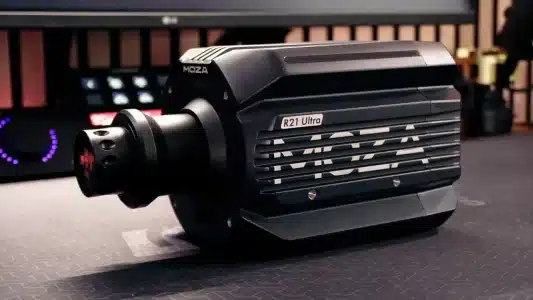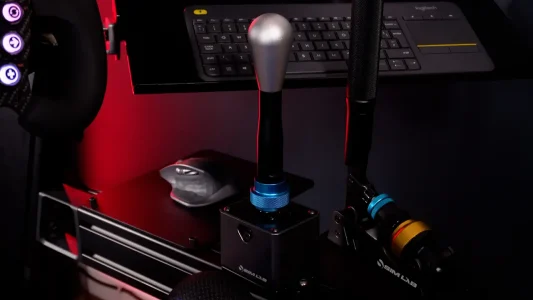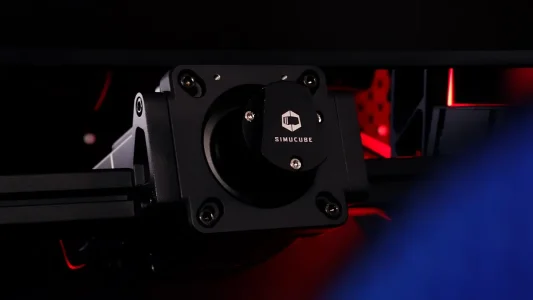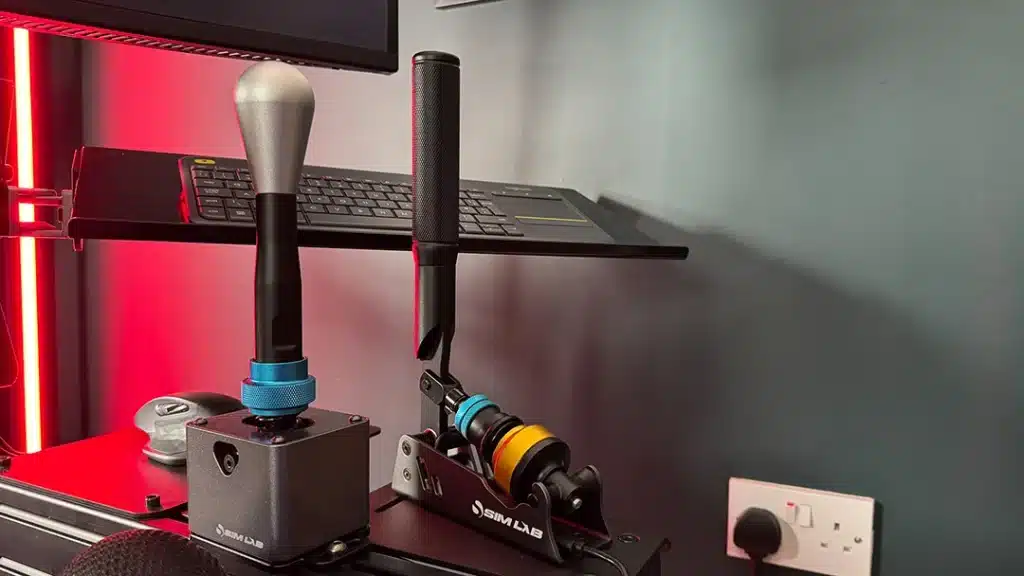
Our Verdict
Pros
- Tooless adjustments
- Sleek and minimal design
- High build quality
- Plenty of adjustment
- Smooth and precise two stage damper
Cons
- PC only
- USB Port not well designed
- Mounting can be a little tricky
If you’ve been eyeing up a handbrake for your setup, you’ve probably head of the Sim-Lab XB1. This handbrake released in mid 2023, and I’ve had it on my rig for a few months, courtesy of Sim-Lab sending a unit over alongside the SQ1 shifter which I also recently reviewed.
While it may seem like a small edition to Sim-Lab’s lineup, the XB1, alongside the SQ1 shifter are important steps in Sim-Lab’s overall goal of producing a complete sim racing lineup. All we’re really waiting on is the reveal of the Dutch companies direct drive wheel base that they’ve been teasing.

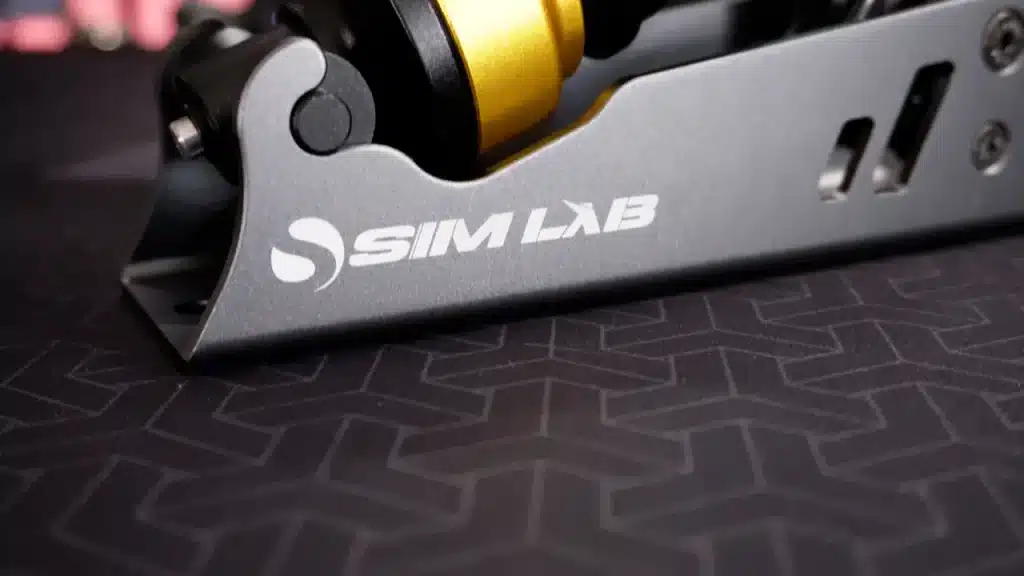
Before looking at the price, I want to look at exactly what this handbrake offers. Like all Sim-Lab products, this is a true piece of engineering thanks to its rigid aluminium build. It features a two-stage damper which is fully adjustable thanks to its elastomer stack. And unlike cheaper handbrakes, the XB1 features a load cell sensor rated up to 150kg.
It also helps that this thing look downright handsome, well as handsome as a metal handbrake can. It follows Sim-Lab’s usual sleek and minimal design, with blue accents to highlight adjustable elements. Much like the Heusinkveld handbrake, the damping block and elastomers are on show, giving it a rather industrial and mechanical appearance.
Watch our Sim-Lab XB1 Handbrake Review
Review coming soon.
Price of the Sim-Lab XB1 Handbrake
Now of course, these features do come at a price. And that price is £175 in the UK, €195 in Europe and $219 in the States. This means it is certainly a premium sim racing peripheral, but not extortionate.
| Product | Price |
|---|---|
| Sim-Lab XB1 Handbrake | UK: £175 EU: €195 US: $219 |
Competitors such as the Fanatec Handbrake V2, Thrustmaster TSS and the SIMAGIC TB-1 are priced similarly, but all lack the same sleek appearance as this XB1. You then of course have the Heusinkveld handbrake I mentioned earlier which will set you back roughly €/$100 more.
Unboxing and what’s included
So for your €/$200, what do you get with the XB1? Inside the box are the two main handbrake elements snuggly nestled in foam. You have the main body completely pre-assembled, including a pre-installed damper stack. Then there is the handgrip which simply screws onto the base to form the complete handbrake.
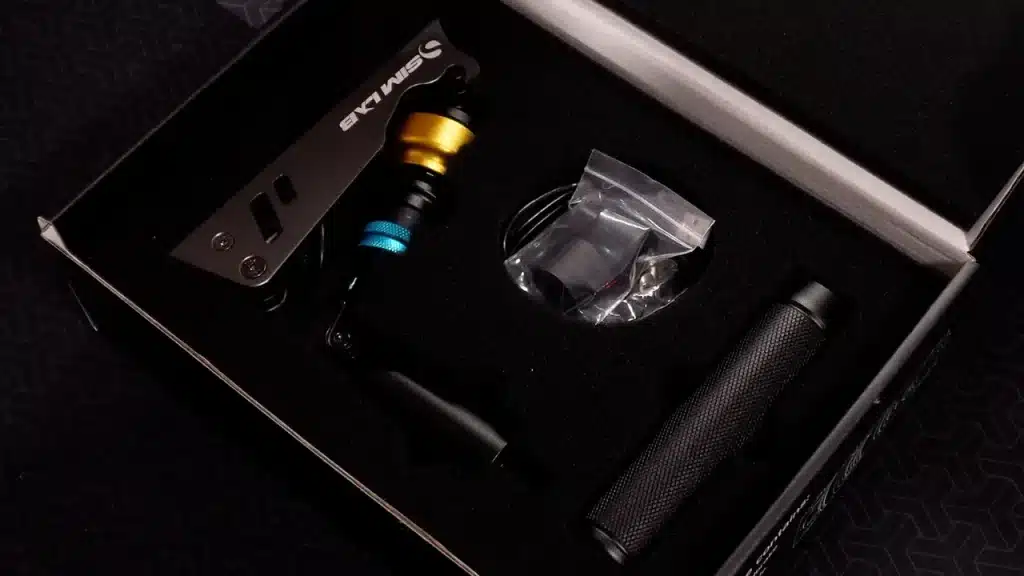
You also get a set of three other elastomers which can be installed to affect how much resistance the handbrake offers. Finally there are a set of mounting hardware and the USB cable. Which I’m delighted to say is much longer than the cable that comes with the SQ1 shifter, meaning I can actually run this all the way across my rig without having to buy a longer one.
Adjustments
When it comes to adjustments, this handbrake has a lot of areas you can tweak to your liking. The three included elastomers give you different resistance options. By default, the medium 60A elastomer is installed, with a softer 50A and stiffer 70A available. There is also a pre-load buffer which slots inside the spring if you plan on removing most of the preload, which is something I opted for.
Disassembly is required to adjust any of these mechanical elements. But thankfully things are pretty easy to take apart and reassemble, and zero tools are required. This is achieved by simply loosening the preload nuts and pushing the entire stack forward to pop it out.
Once you’ve set up your elastomer stack how you want it, you can adjust the initial resistance at any time using the blue adjustment knobs.

Software
Then you also have more adjustment available in Sim-Lab’s RaceDirector software. This isn’t required to use the XB1 but is ideal if you want to adjust the input curve, recalibrate or save custom profiles.
If you’ve used RaceDirector before, you’ll know how simple its UI is, which in the case of this XB1 is a good thing. With the handbrake enabled in the settings, you can calibrate your handbrake, which is always worth doing after a mechanical change.
The input curve can be adjusted either manually by moving the points around, or you can select any of the preset curves for quick adjustments. You may want to also add some deadzone at the top or bottom of the curve. Useful if you want a slight delay on the initial activation, or to hit 100% input slightly sooner.
And as a part of RaceDirector, it is easy to save various presets, and load them at a later date. Perfect for creating a different feeling handbrake for different racing sims. You may want the input curve to be slightly different when jumping from drifting to rallying for example.
Mounting
When it comes to mounting, things are pretty easy. Two pre-drilled holes, one front and one rear, allow you to mount down into any cockpit. The mounting isn’t quite as easy as with the SQ1 shifter, primarily because the damping block sticks slightly over the mounting hole.
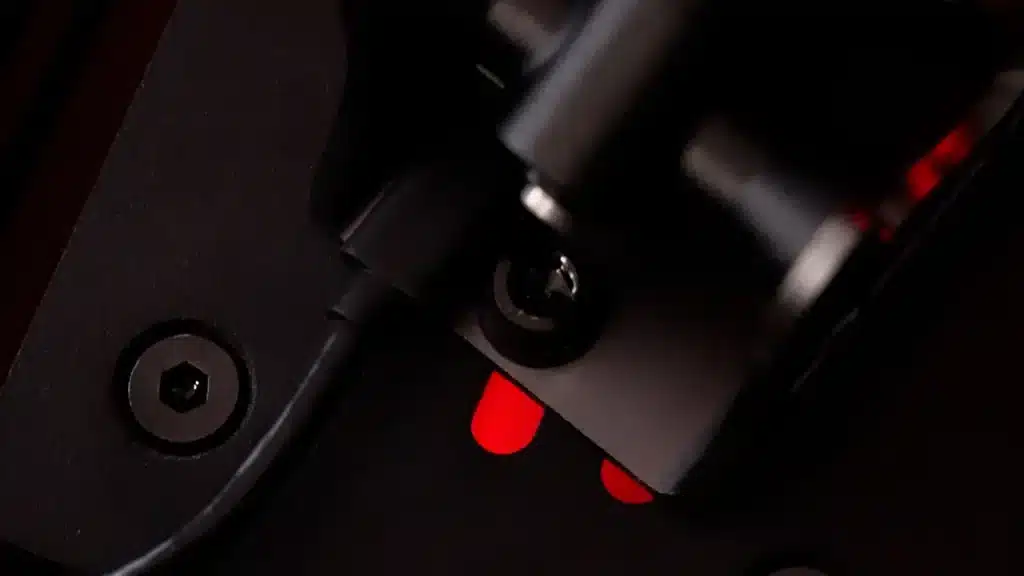
This is easily solved by temporarily removing the damping block. I have the XB1 mounted through Sim-Lab’s dedicated handbrake mount, which is available as an extra accessory, and to be honest, it’s pretty perfect. It follows the angle that you’d really want the handbrake mounted at ensuring nothing protrudes too far from your rig.
The design
From a design standpoint, the XB1 is more about function over form, but that doesn’t necessarily detract from its overall appearance. With the mechanisms not being enclosed in a large black box, it makes the whole handbrake appear smaller, and in many ways sleeker.
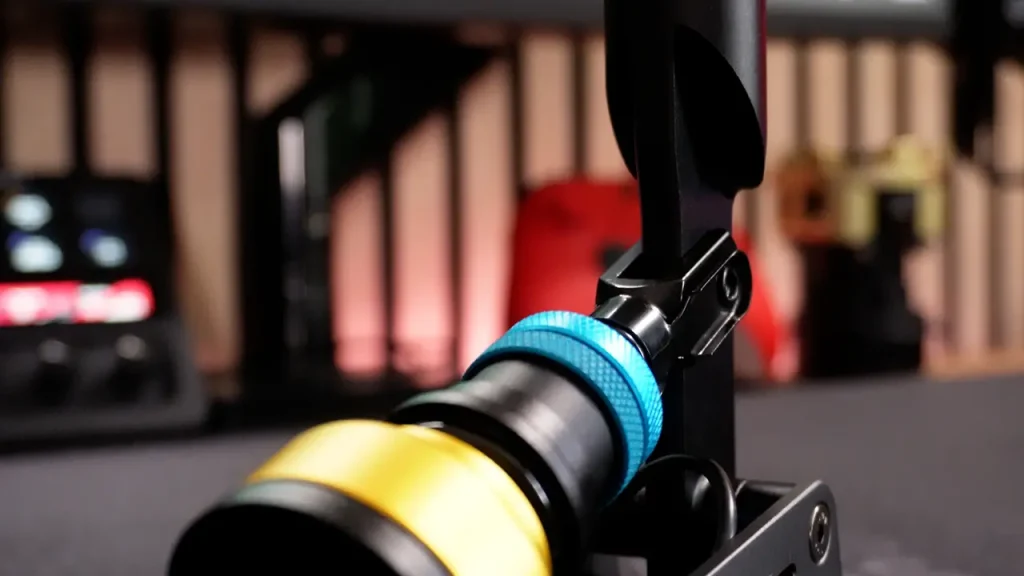
Materials and build: As with all Sim-Lab hardware, material quality is excellent. Pretty much everything is machined aluminum with a really nice anodized finish. The baseplate, the handle, the load cell housing – it’s all metal. No plastic bits to break or wear out over time. The signature Sim-Lab blue accent on the adjustment ring adds just a touch of color without being gaudy.
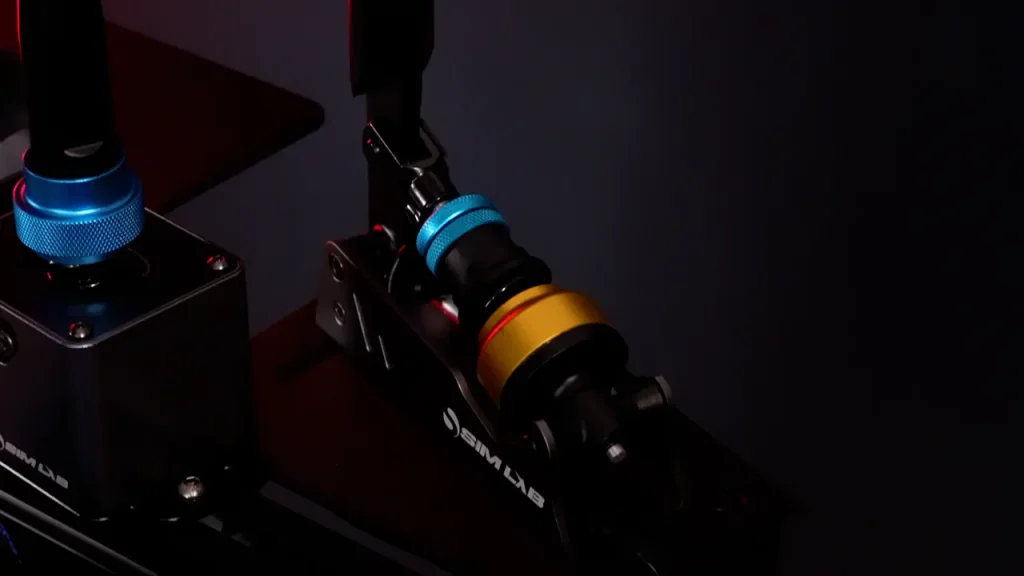
Handle design: The handle itself deserves special mention. It’s not too long, not too short, and has a really good grip texture. The whole handle is metal so over time, if you don’t race with gloves, or you wear a ring or any jewellery the black may start to wear. But on mine, things still look factory new, and the all black grip is something I do wish carried over to the SQ1 shifter. It’s also worth noting that the handle cannot be horizontally positioned, and this could prevent some sim racers from really nailing that perfect road car feel.
One area where the design isn’t quite perfect, is with the USB port. Unlike the SQ1 which houses the USB port at the rear so its out of sight. On the XB1 it faces towards you. This means you have to wrap it around your mounting, putting a large kink in your cable, and you will always be seeing it. Also, the USB doesn’t slot all the way into the connection, meaning the fit of the cable feels a little more fragile than it should.

Performance review
Now, for how the XB1 actually feels when you do hit the track in your favourite sim. The good news is, everything feels tight and incredibly precise, resulting in an excellent in-game feel.
Whether you’re hitting a rally stage, or drifting, the amount of precise control you have is perfect. Thanks to the two-stage damper, you can quickly learn how to apply different amounts of braking force.
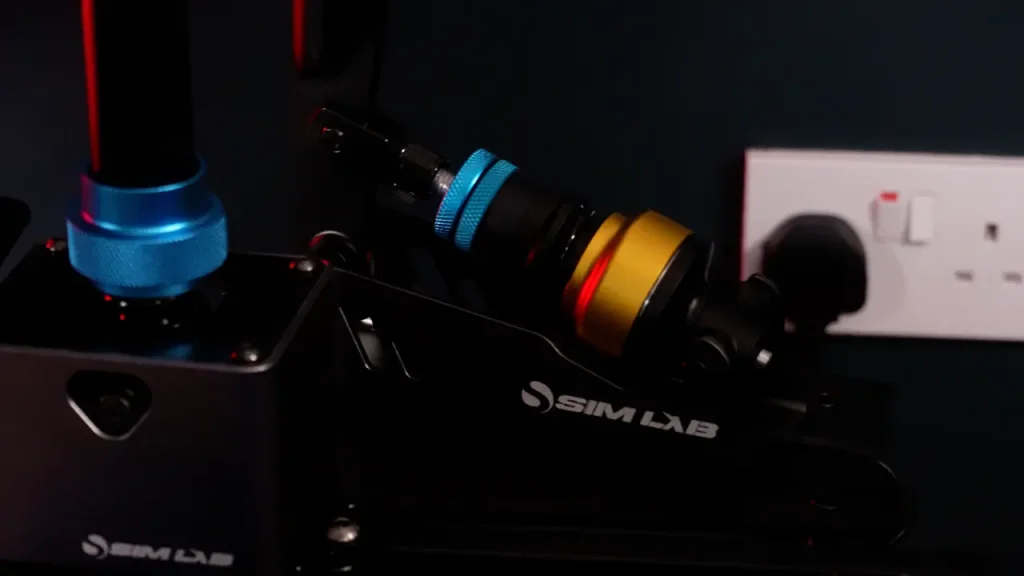
Pulling the handbrake slightly will allow you to apply enough force to start to rotate your car without locking your wheels. Then, that final amount of travel which becomes much stiffer, can be used to really lock your wheels and rotate your car more aggressively through tighter hairpins.
As the handbrake does progress from the spring phase to the elastomer, the progression is silky smooth. You don’t notice a huge step or jarring feel when this second stage engages. Instead, things start to stiffen up the further the lever travels, while all remaining incredibly realistic.
When drifting, this level of precision lets you learn how much force to apply to achieve different drift angles. Over time, through longer runs, you can develop a real level of consistency that lets you comfortably initiate drifts to the exact angle required.
The good news is that this handbrake can really take a beating as well. The load cell is rated to 150kg, and the stiffer elastomers and ability to dial out the pre-load let you really stiffen the activation up. Alternatively, the movement can also be rather light. I’ve opted for somewhere in the middle, utilising the pre-load buffer and the medium 60A elastomer.
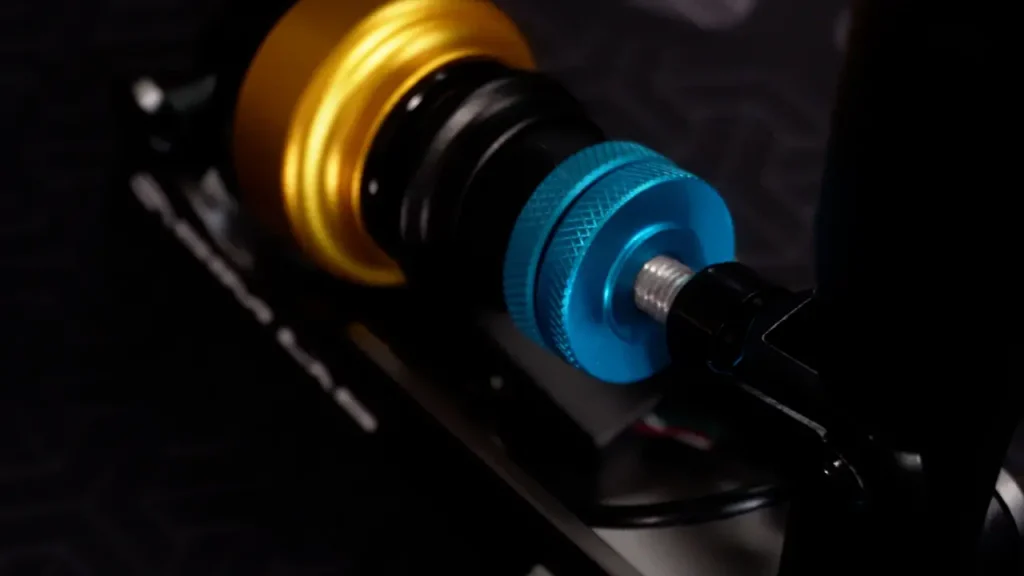
Also, thanks to the load cell sensor, wear over time is pretty much none existent. The performance will be as consistent as always, every time you hit the track.
Final Thoughts
My final thoughts on this handbrake are incredibly positive. Sim-Lab have really nailed so many elements that a sim racer would want out of a handbrake, while just slipping on a couple of the small details.
What I love: The overall design of the XB1 is stunning. It looks incredibly mechanical thanks to the exposed brake stack, and this leads to it also appearing minimal and lightweight. While the all-metal construction is exactly what you want out of a piece of hardware that will inevitably take a beating.
The ability to adjust exactly how this handbrake feels thanks to the different elastomers, pre-load screws and software adjustments, makes it a handbrake that most sim racers could set up in exactly the way they like. And when on track, the performance is as good as I’ve felt from a handbrake.

What I don’t love: The smaller design details are where this handbrake does falter slightly. The USB cable not seating properly and facing you is a strange choice, and the mounting holes are semi-blocked by the brake stack requiring a bit of additional fiddling.
As nice as the grip does look out of the box. I would probably have preferred a rubber handgrip also to prevent the potential of scratches and scuffs over time. One final note, the design of the lever cannot be adjusted to a horizontal position like the Fanatec Handbrake V2 or MOZA handbrake. This does prove to be a limitation for those looking for a realistic road car feel.
Other than these small design decisions, this is a handbrake I can wholeheartedly recommend. Priced competitively at around €/$200, the XB1 provides precise performance, incredible build quality and lot of adjustability.
Frequently asked questions
No, the Sim-Lab XB1 is PC-only via USB connection. It won’t work with consoles.
It’s actually pretty easy once you know what you’re doing. You unload the preload nuts, push the lever forward, and unhook the hinge. The whole process takes maybe 5 minutes once you’re familiar with it.
No, it’s plug-and-play and will work in most racing sims without any additional software. Race Director just gives you extra fine-tuning options for dead zones and curves.
You really need a solid mounting surface. The 150kg load cell generates serious forces, so a desk mount probably won’t work well. Sim-Lab does offer optional brackets for different mounting scenarios.
Technical Specifications
Review written by Felix König











